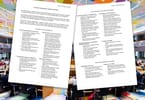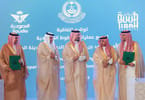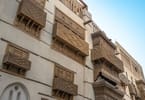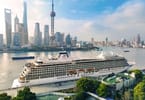As Phnom Penh will play host to the ASEAN Travel Forum, Southeast Asia’s largest international tourism event, eTurboNews Asia Senior Editor Luc Citrinot takes a look at the latest changes in the Cambodian capital in a series of articles.
PHNOM PENH (eTN) – Phnom Penh is a rapidly-changing city. Ten years ago, the Cambodian capital was seen as a laid-back destination where gardens, the Mekong River, and derelict colonial villas gave a distinctive atmosphere to the city. Less than a decade later, skyscrapers started to invade the city skyline, while the surviving colonial buildings were turned into luxurious hotels, trendy restaurants, or chic design shops. With Phnom Penh enjoying a new sense of wealth, a Cambodian art scene is slowly emerging with artists and gallery owners exhibiting promising young artists. Riem Em, a well-established designer and painter talks exclusively to eTurboNews about Phnom Penh’s new art scene.
eTN: Do you think that Phnom Penh is a city giving a chance to young artists? Are there structures in place to showcase new talents?
RIEM EM: I do believe that Phnom Penh is a city offering a chance to young artists to create as the art scene is far [from] being saturated. We have little tradition in innovative contemporary art. This new spirit is a good source of creativity. However, we have a far too small number of venues to expose our works. I opened a gallery a few years ago [La Galerie, n°13, Street 178], which is probably the only “true” art gallery to date in Phnom Penh. It is opened everyday, and it is fully dedicated to exhibiting art. People can come and go as they want… Otherwise, some NGOs or some foreign cultural centers, such as the Alliance Française or the Meta House, offer spaces for art, or also Java Café and Gallery, which combines a coffee place with three exhibition rooms.
eTN: Do tourist institutions look at promoting art?
RIEM EM: They are some hotels such as Villa Langka in Phnom Penh or Hotel de la Paix in Siem Reap which regularly organize exhibitions of young Khmer artists within their premises. In Phnom Penh, Isabelle Drouillard has been very active to expose very young artists in hotels. She organizes events within Phare Ponleu Selpak NGO, which support art schools. Hotel de la Paix has its own curator, Sasha Constable, who organizes five to six exhibitions per year.
eTN: Does the government contribute to promote the country’s artists?
RIEM EM: Unfortunately no. The government does not care that much. I wanted for example to teach art to young generations at the School of Fine Arts. Unfortunately, I am already considered as too old by public authorities as I am over 30 years. It motivated my decision to have my own space.
eTN: Is the emerging Cambodian middle class interested in contemporary art?
RIEM EM: Upper middle-class Cambodians are not very interested in contemporary art. They prefer diamonds, large cars, karaoke, anything related to the “bling-bling” culture… Mostly expatriates or foreign travelers are looking to discover the new Cambodian art scene.
eTN: What are your sources of inspiration? Does Cambodia’s tragic past still strongly influence art?
RIEM EM: I have known the Khmer Rouge regime, and the tragic history of Cambodia is certainly a source of inspiration for some of my portraits, not only for me but probably for many other artists. All the problems faced by Cambodia today such as the “new rich” phenomenon, the widening gap between rich and poor, violence in the society can be expressed through arts. There is, for example, now an exhibition on “new rich” organized at the Alliance Française until the end of January. As we cannot always talk freely about all the problems within our society, art can speak for us. This is where it probably takes its strength.
WHAT TO TAKE AWAY FROM THIS ARTICLE:
- I do believe that Phnom Penh is a city offering a chance to young artists to create as the art scene is far [from] being saturated.
- I have known the Khmer Rouge regime, and the tragic history of Cambodia is certainly a source of inspiration for some of my portraits, not only for me but probably for many other artists.
- As Phnom Penh will play host to the ASEAN Travel Forum, Southeast Asia’s largest international tourism event, eTurboNews Asia Senior Editor Luc Citrinot takes a look at the latest changes in the Cambodian capital in a series of articles.






















